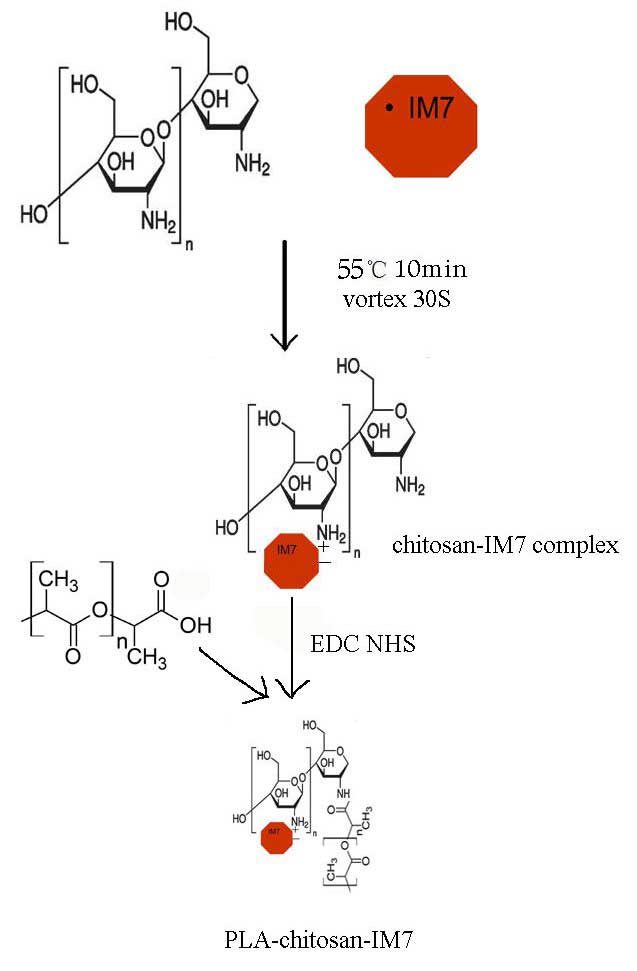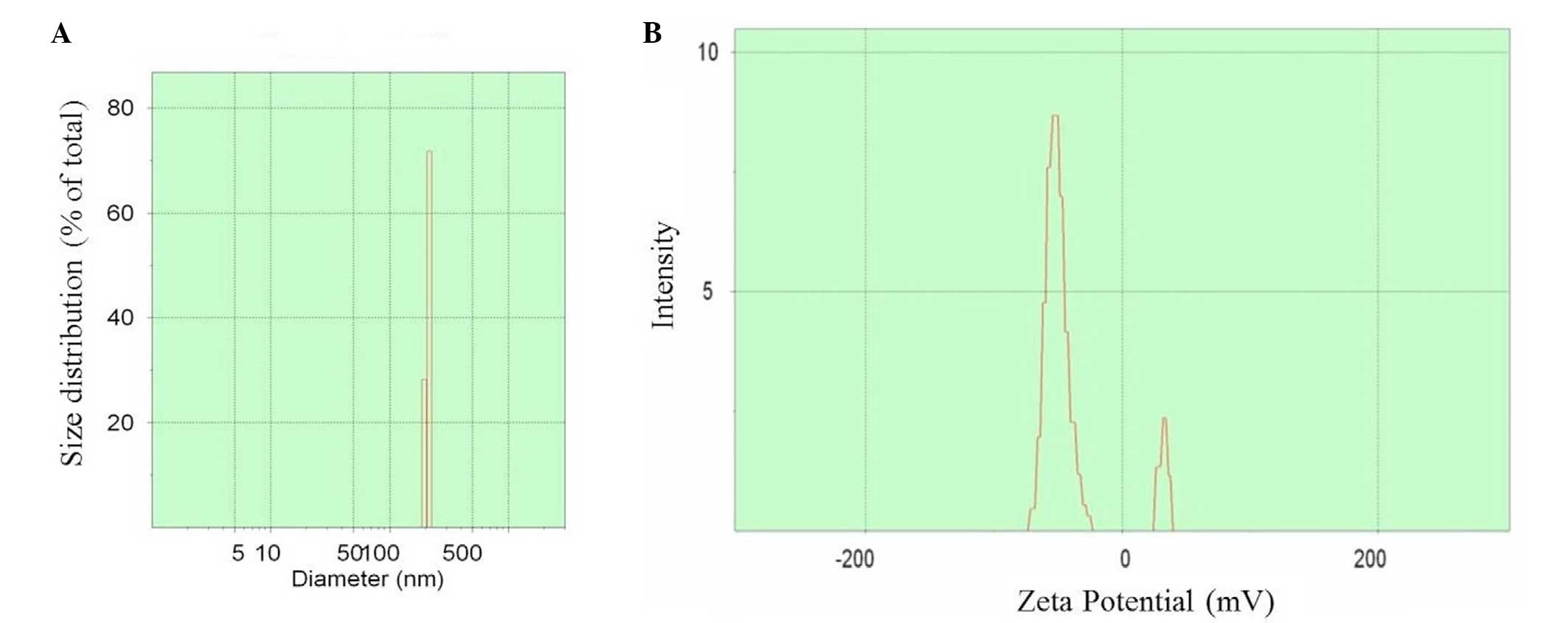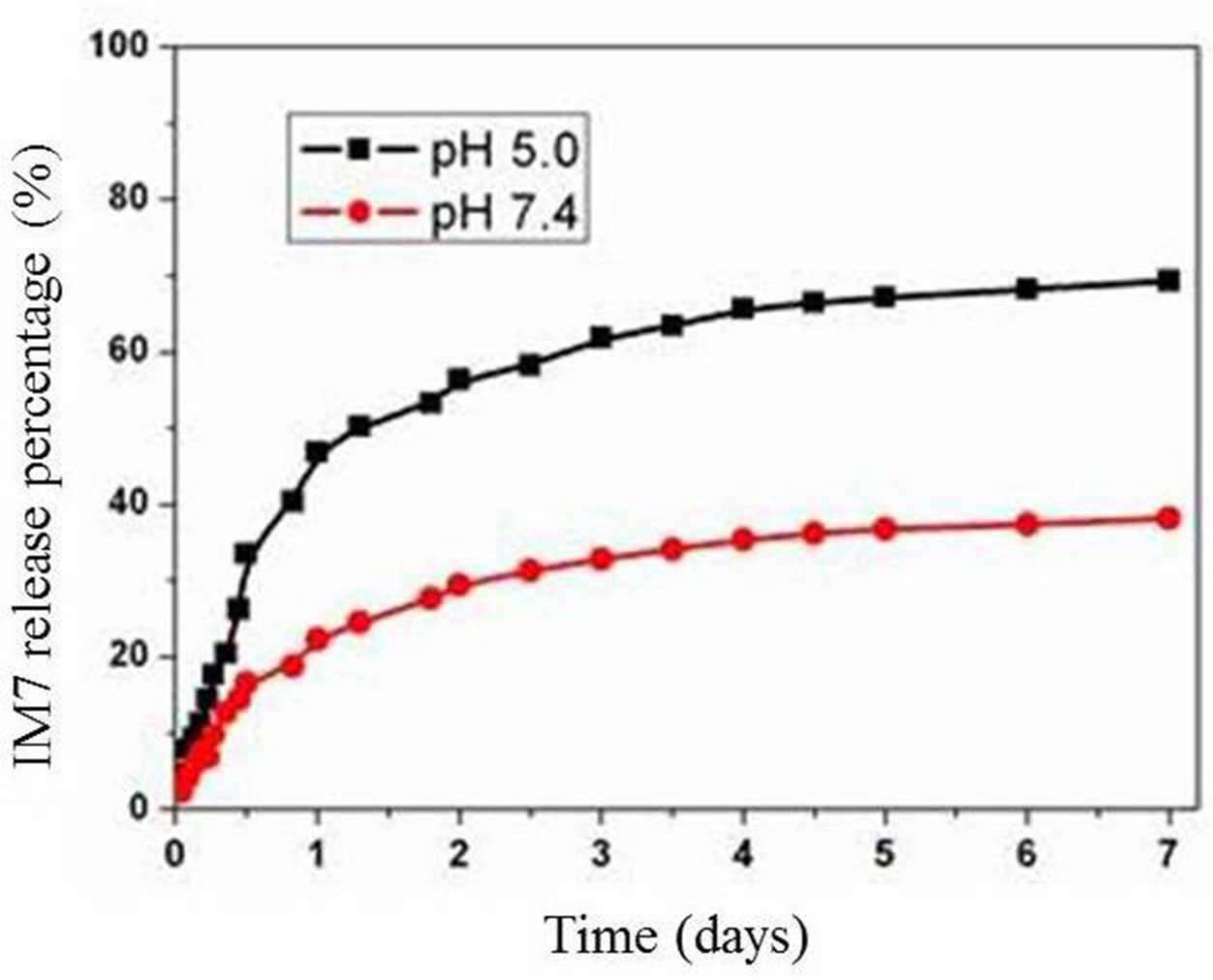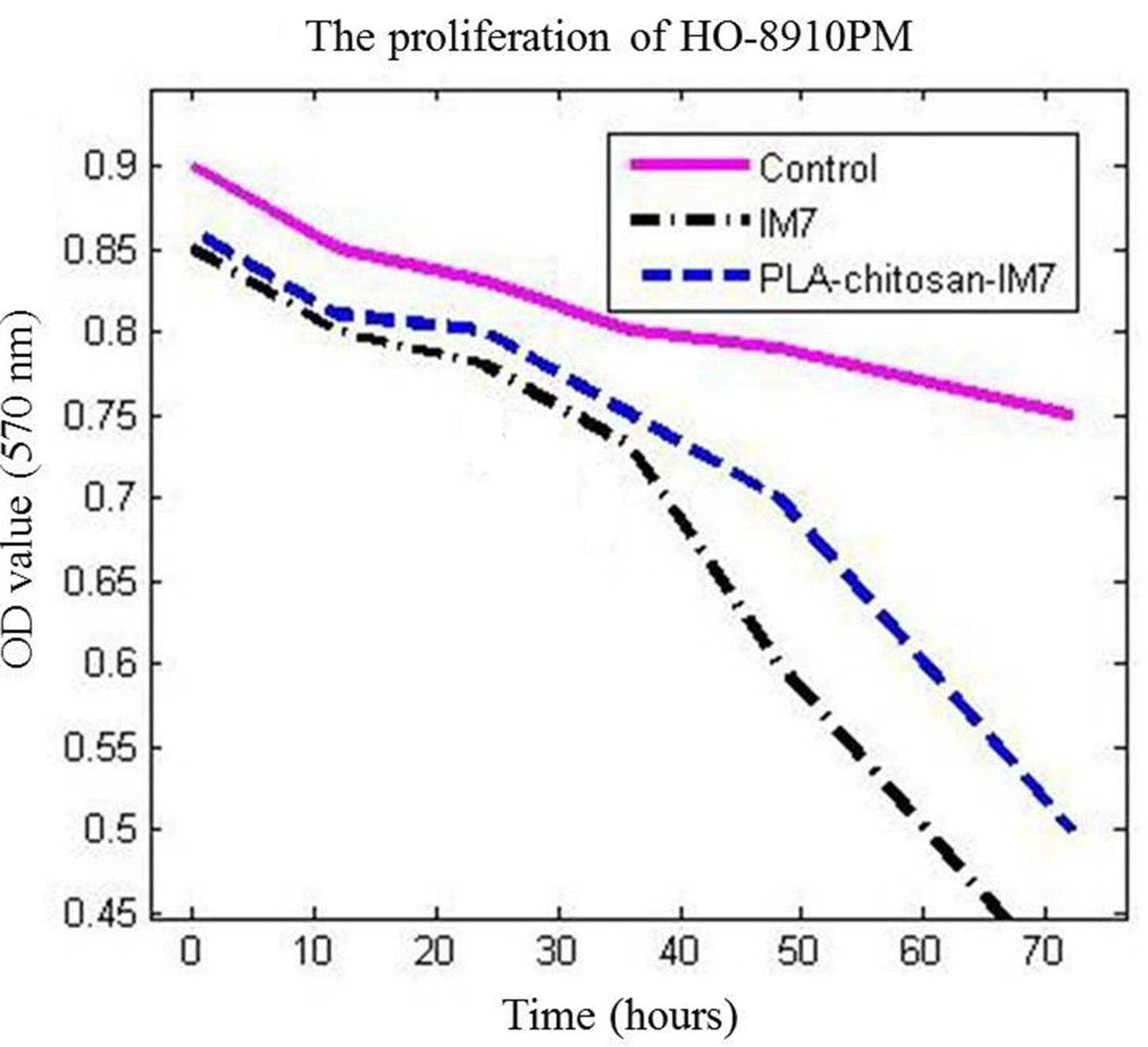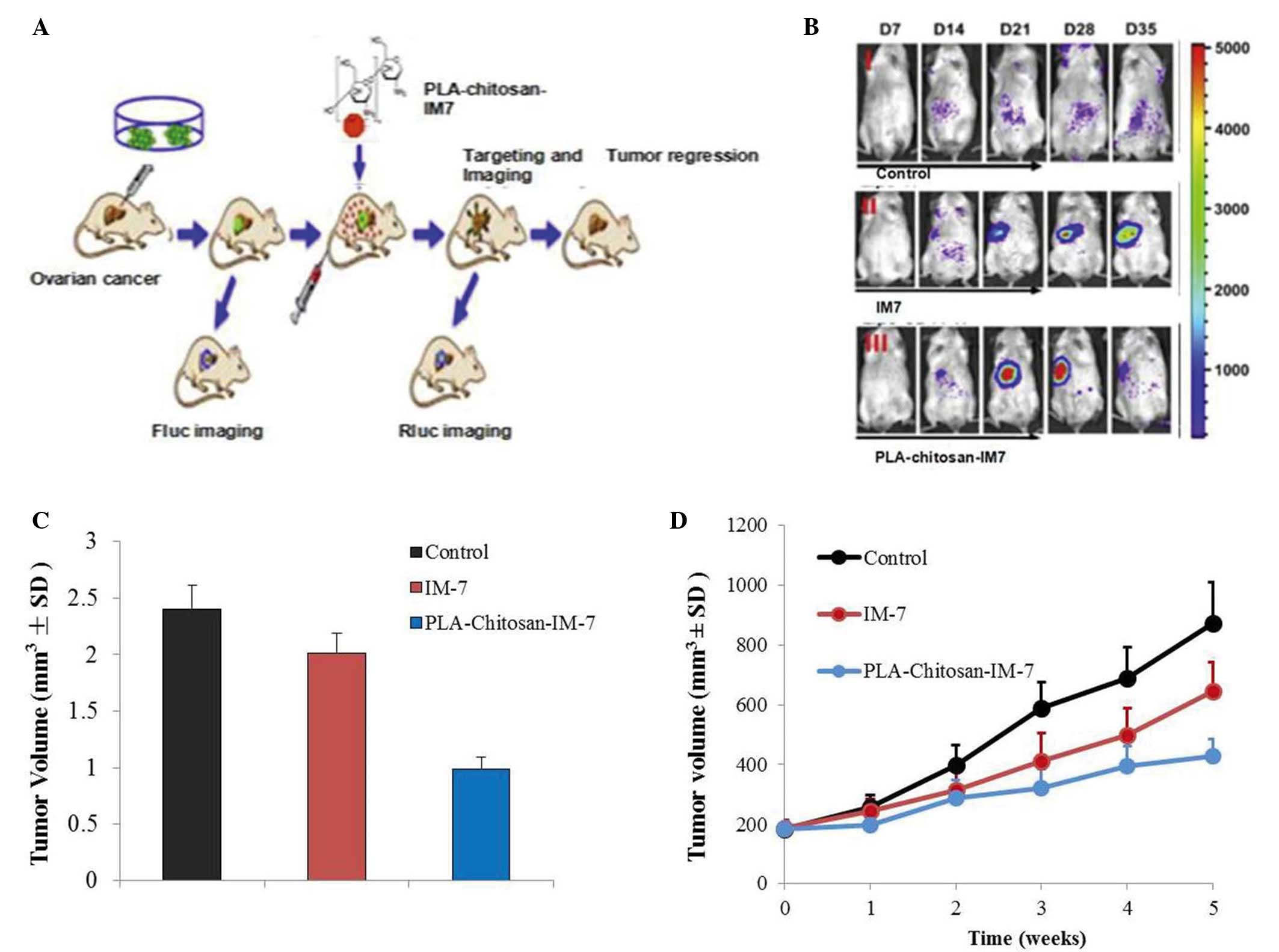|
1
|
Siegel R, Naishadham D and Jemal A: Cancer
statistics, 2013. CA Cancer J Clin. 63:11–30. 2013. View Article : Google Scholar : PubMed/NCBI
|
|
2
|
Bourguignon LY, Zhu H, Zhou B, Diedrich F,
Singleton PA and Hung MC: Hyaluronan promotes Cd44V3-Vav2
interaction with Grb2-p185 (HER2) and induces Racl and Ras
signaling during ovarian tumor cell migration and growth. J Biol
Chem. 276:48679–48692. 2001. View Article : Google Scholar : PubMed/NCBI
|
|
3
|
Carpenter PM and Dao AV: The role of
hyaluronan in mesothelium-induced motility of ovarian carcinoma
cells. Anticancer Res. 23:3985–3990. 2003.PubMed/NCBI
|
|
4
|
Cannistra SA, Abu-Jawdeh G, Niloff J,
Strobel T, Swanson L, Andersen J and Ottensmeier C: CD44 variant
expression is a common feature of epithelial ovarian cancer: Lack
of association with standard prognostic factors. J Clin Oncol.
13:1912–1921. 1995.PubMed/NCBI
|
|
5
|
Ourguignon LY, Zhu H, Zhou B, Diedrich F,
Singleton PA and Hung MC: Hyaluronan promotes Cd44V3-Vav2
interaction with Grb2-p185(HER2) and induces Racl and Ras signaling
during ovarian tumor cell migration and growth. J Biol Chem.
276:48679–48692. 2001. View Article : Google Scholar : PubMed/NCBI
|
|
6
|
Bourguignon LY, Zhu H, Chu A, Iida N,
Zhang L and Huang MC: Interaction between the adhesion receptor,
CD44, and the oncogene product, p185HER2, promotes human ovarian
tumor cell activation. J Biol Chem. 272:27913–27918. 1997.
View Article : Google Scholar : PubMed/NCBI
|
|
7
|
Ourguignon LY, Zhu H, Shao L and Chen YW:
CD44 interaction with c-Src kinase promotes cortactin-mediated
cytoskeleton function and hyaluronic acid-dependdent ovarian tumor
cell migration. J Biol Chem. 276:7327–7336. 2001. View Article : Google Scholar : PubMed/NCBI
|
|
8
|
Bourguignon LY, Peyrollier K, Gilad E and
Brightman A: Hyaluronan-CD44 interaction with neural
Wiskott-Aldrich syndrome protein (N-WASP) promotes actin
polymerization and ErbB2 activation leading to beta-catenin nuclear
translocation, transcriptional up-regulation, and cell migration in
ovarian tumor cells. J Biol Chem. 282:1265–1280. 2007. View Article : Google Scholar : PubMed/NCBI
|
|
9
|
Bourugnon LY, Gilad E and Peyrollier K:
Heregulin-mediated ErbB2-ERK signaling activates hyaluronan
synthases leading to CD44-dependent ovarian tumor cell growth and
migration. J Biol Chem. 282:19426–19441. 2007. View Article : Google Scholar : PubMed/NCBI
|
|
10
|
Zhu D and Bourguignon LY: Interaction
between CD44 and the repeat domain of ankyrin promotes hyaluronic
acid-mediated ovarian tumor cell migration. J Cell physiol.
183:182–195. 2000. View Article : Google Scholar : PubMed/NCBI
|
|
11
|
Tzuman YC, Sapoznik S, Granot D, Nevo N
and Neeman M: Peritoneal adhesion and angiogenesis in ovarian
carcinoma are inversely regulated by hyaluronan: The role of
gonadoptropins. Neoplasia. 12:51–60. 2010. View Article : Google Scholar : PubMed/NCBI
|
|
12
|
Ween MP, Hummitzsch K, Roggers RJ, Oehler
MK and Ricciardelli C: Versican induces a pro-metastatic ovarian
cancer cell behavior which can be inhibited by small hyaluronan
oligosaccharides. Clin Exp Metastasis. 28:113–125. 2011. View Article : Google Scholar : PubMed/NCBI
|
|
13
|
Lee H, Lee K and Park TG: Hyaluronic
acid-paclitaxel conjugate micelles: Syhthesis, characterization,
and antitumor activity. Bioconjug Chem. 19:1319–1325. 2008.
View Article : Google Scholar : PubMed/NCBI
|
|
14
|
Cohen MS, Cai S, Xie Y and Forrest ML: A
novel intralymphatic nanocarrier delivery system for cisplatin
therapy in breast cancer with improved tumor efficacy and lower
systemic toxicity in vivo. Am J Surg. 198:781–786. 2009. View Article : Google Scholar : PubMed/NCBI
|
|
15
|
Banzato A, Bibisse S, Rondina M, Renier D,
Bettella F, Esposito G, Quintieri L, Meléndez-Alafort L, Mazzi U,
Zanovello P and Rosato A: A paclitaxel-hyaluronan bioconjugate
targeting ovarian cancer affords a potent in vivo therapeutic
activity. Clin Cancer Res. 14:3598–3606. 2008. View Article : Google Scholar : PubMed/NCBI
|
|
16
|
Thompson CB, Shepard HM, O'Connor PM,
Kadhim S, Jiang P, Osgood RJ, Bookbinder LH, Li X, Sugarman BJ,
Connor RJ, et al: Enzymatic depletion of tumor hyaluronan induces
antitumor responses in preclinical animal models. Mol Cancer Ther.
9:3052–3064. 2010. View Article : Google Scholar : PubMed/NCBI
|
|
17
|
Guedan S, Rojas JJ, Gros A, Mercade E,
Cascallo M and Alemany R: Hyaluronidase expression by an oncolytic
adenovrirus enhances its intratumoral spread and suppresses tumor
growth. Mol Ther. 18:1275–1283. 2010. View Article : Google Scholar : PubMed/NCBI
|
|
18
|
Lee SJ, Min HS, Ku SH, Son S, Kwon IC, Kim
SH and Kim K: Tumor-targeting glycol chitosan nanoparticles as a
platform delivery carrier in cancer diagnosis and therapy.
Nanomedicine Lond). 9:1697–1713. 2014. View Article : Google Scholar : PubMed/NCBI
|
|
19
|
Chen Y, Zhu X, Zhang X, Liu B and Huang L:
Nanoparticles modified with tumor-targeting scFv deliver siRNA and
miRNA for cancer therapy. Mol Ther. 18:1650–1656. 2010. View Article : Google Scholar : PubMed/NCBI
|
|
20
|
Sun X, Zeng L, Chen C, Huang Y, Han F,
Xiao W, Liu S and Lu T: Comparing treatment outcomes of different
chemotherapy sequences during intensity modulated radiotherapy for
advanced N-stage nasopharyngeal carcinoma patients. Radiat Oncol.
8:2652013. View Article : Google Scholar : PubMed/NCBI
|
|
21
|
Elbakry A, Zaky A, Liebl R, Rachel R,
Goepferich A and Breunig M: Layer-by-layer assembled gold
nanoparticles for siRNA delivery. Nano Lett. 9:2059–2064. 2009.
View Article : Google Scholar : PubMed/NCBI
|
|
22
|
Cai L, Li J, Zhang X, Lu Y, Wang J, Lyu X,
Chen Y, Liu J, Cai H, Wang Y and Li X: Gold nano-particles (AuNPs)
carrying anti-EBV-miR-BART7-3p inhibit growth of EBV-positive
nasopharyngeal carcinoma. Oncotarget. 6:7838–7850. 2015. View Article : Google Scholar : PubMed/NCBI
|
|
23
|
Biswas S and Torchilin VP:
Nanopreparations for organelle-specific delivery in cancer. Adv
Drug Deliv Rev. 66:26–41. 2014. View Article : Google Scholar : PubMed/NCBI
|















